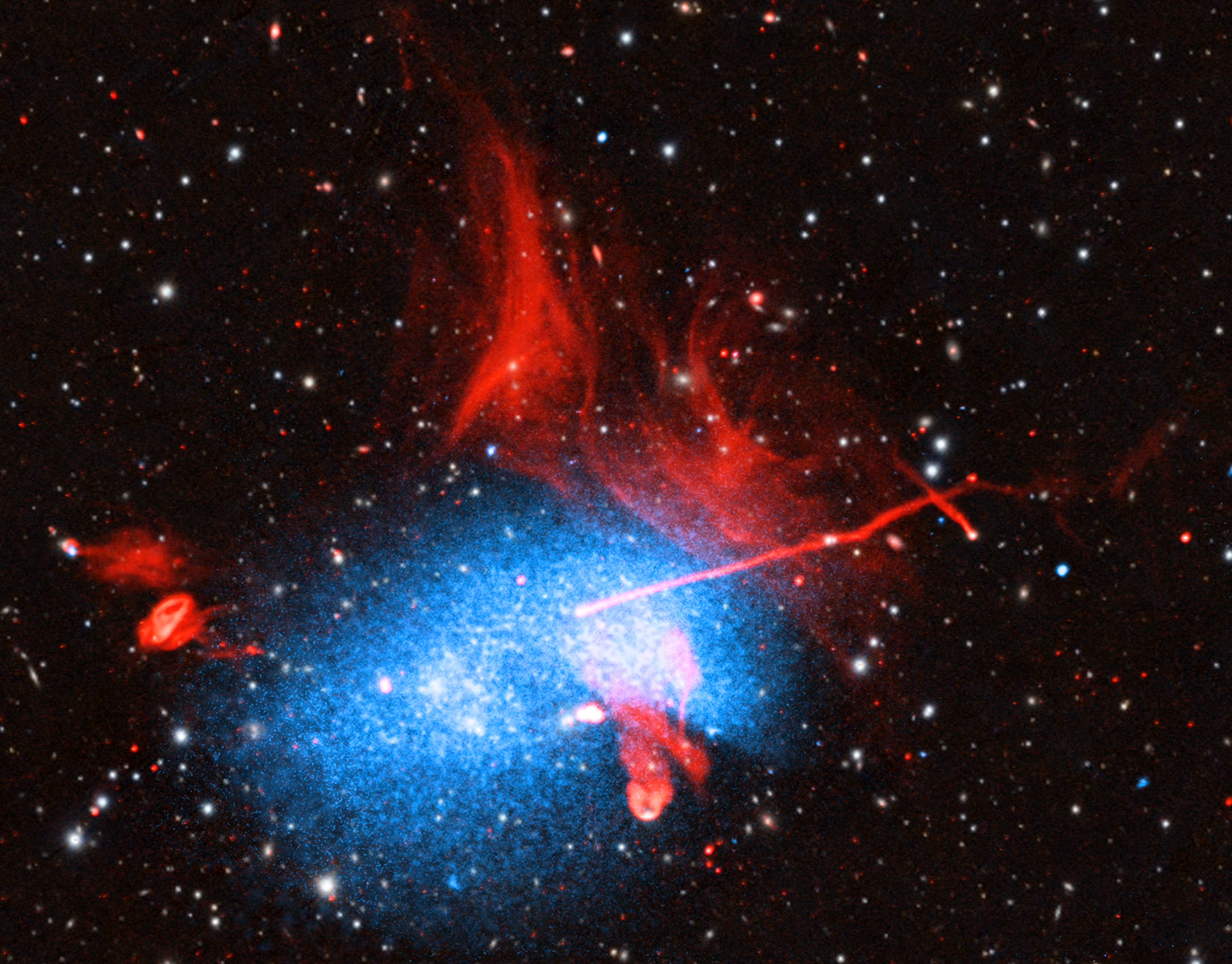Chaotic 'knot' of merging galaxy clusters captured in multiple wavelengths
There's a lot going on inside Abell 2256.
Some 780 million light-years from Earth, at least three galactic clusters are undergoing a chaotic merger, and using data from a variety of telescopes, astronomers captured the massive collision in a striking new image.
The smaller galactic clusters, each of which comprises hundreds or thousands of individual galaxies, are combining to form an even larger galactic cluster known as Abell 2256.
To determine what's going on inside this entanglement, astronomers compiled data from NASA's Chandra X-ray Observatory and the European Space Agency's XMM-Newton, both of which are space telescopes, as well as Pan-STARRS at Haleakala Observatory in Hawaii; the Giant Metrewave Radio Telescope in Pune, India; the Low Frequency Array in the Netherlands and neighboring European countries; and the Very Large Array near Socorro, New Mexico.
Related: Iconic James Webb Space Telescope images get X-ray vision boost

The result is a composite image showing multiple wavelengths: X-rays in blue, radio waves in red, and optical and infrared light in yellow. The X-rays indicate clouds of hot gas, while the radio waves show jets of energy shooting out from the black holes at the centers of galaxies throughout the cluster, as well as "relics," or filamentary structures showing old shock waves from the violent collision. The optical and infrared dots indicate individual galaxies within Abell 2256.
Kamlesh Rajpurohit, an astronomer at the University of Bologna in Italy who leads a team studying Abell 2256, hopes to use images such as this one to unravel the mysteries of how these enormous galactic clusters, which are among the biggest structures in the universe, come to be. One reason they're an intriguing subject to study is that galactic clusters are the largest known particle accelerators in the universe, theorized to be the source of mysterious cosmic rays. With such a detailed image, astronomers can continue to study the potential origin of these mysterious blasts of energy, which travel near the speed of light.
Rajpurohit and his colleagues have published two papers analyzing Abell 2256 — the first in The Astrophysical Journal in March 2022, and the second in the journal Astronomy and Astrophysics in January 2023 — and more research is underway.
Get the Space.com Newsletter
Breaking space news, the latest updates on rocket launches, skywatching events and more!
Follow Stefanie Waldek on Twitter @StefanieWaldek. Follow us on Twitter @Spacedotcom and on Facebook.
Join our Space Forums to keep talking space on the latest missions, night sky and more! And if you have a news tip, correction or comment, let us know at: community@space.com.

Space.com contributing writer Stefanie Waldek is a self-taught space nerd and aviation geek who is passionate about all things spaceflight and astronomy. With a background in travel and design journalism, as well as a Bachelor of Arts degree from New York University, she specializes in the budding space tourism industry and Earth-based astrotourism. In her free time, you can find her watching rocket launches or looking up at the stars, wondering what is out there. Learn more about her work at www.stefaniewaldek.com.









